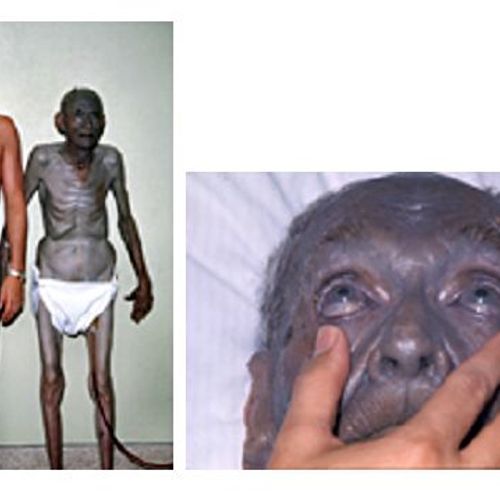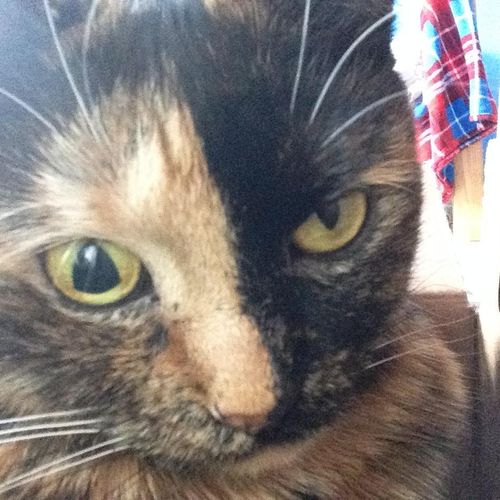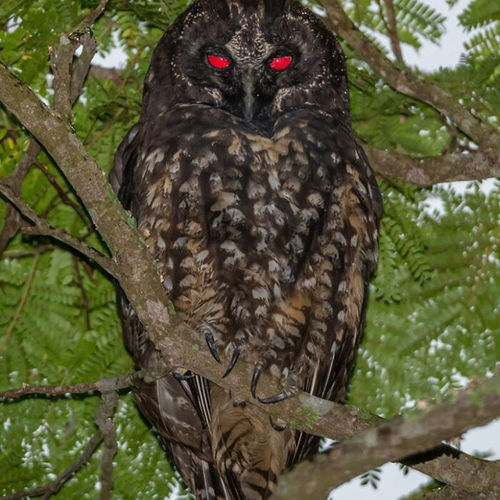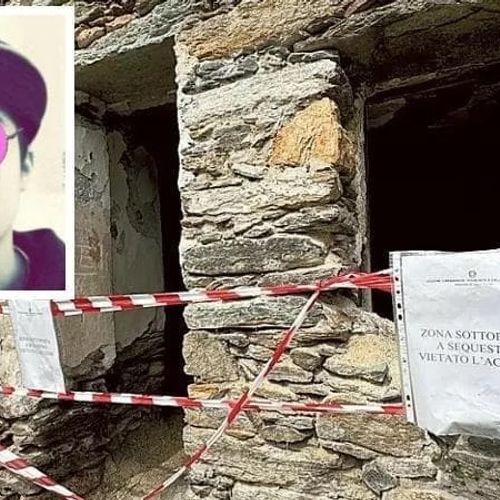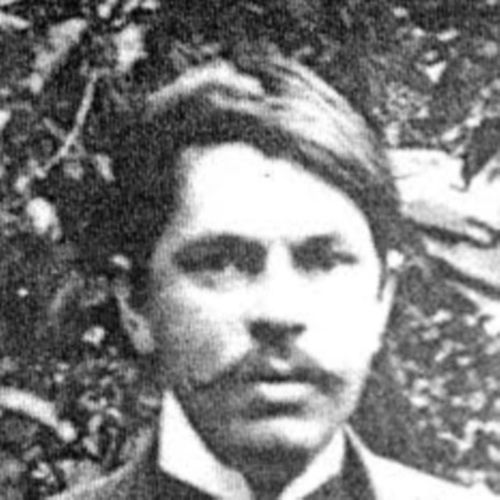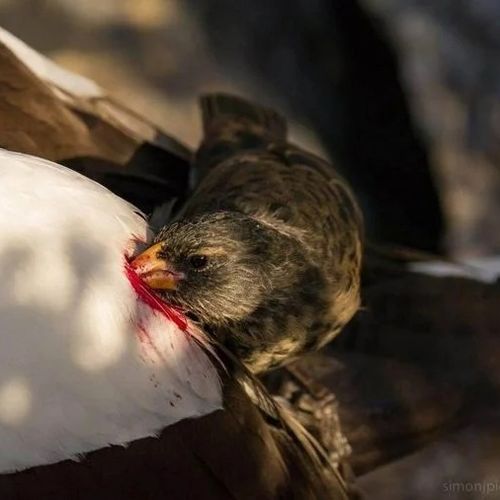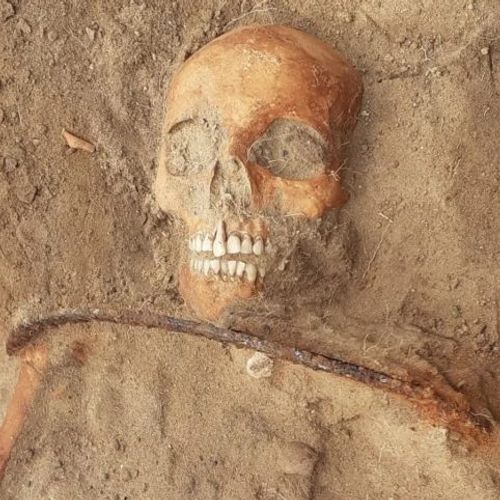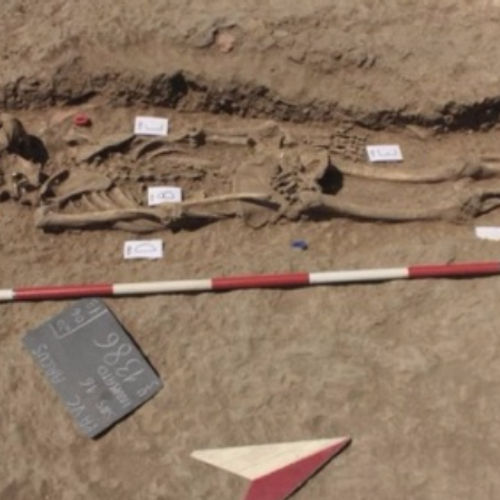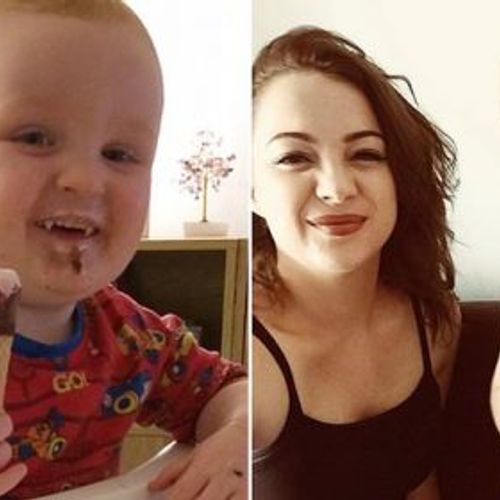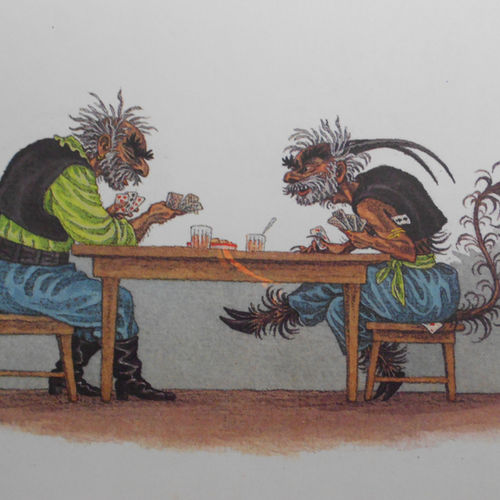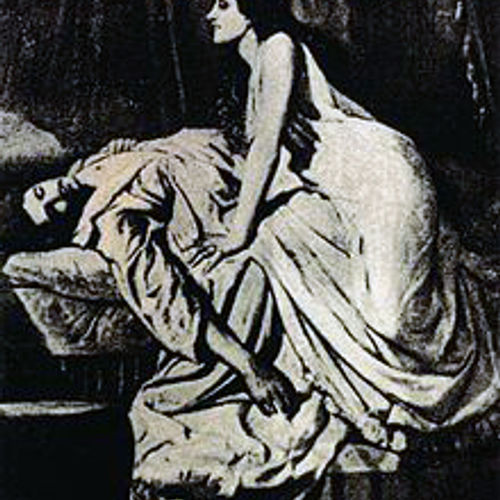
| Added | Wed, 05/10/2016 |
| Hierarchy | |
| Область распространения | Germany
Romania
Russia
Belarus
Ukraine
Slovakia
Serbia
France
Poland
Hungary
Czech Republic
|
| Характерные признаки |
→
→
→
→
→
→
→
→
→
→
→
→
→
→
→
→
→
→
→
→
→
→
→
→
→
→
|
| Sources | Дж. Гордон Мелтон, Энциклопедия вампиров, Издательство «Феникс», 1998 г
|
Vampire is a word of unknown, though rather late, origin, found in German, Romance and most Slavic languages; but it is not found in Church Slavonic, nor in medieval Latin, nor even in ancient and Middle German. It came to the West of Europe from Germany, where, in turn, it was adopted from the South Slavic language. It means a dead man who has risen from the grave, who sucks the blood of sleeping people.
Below we will describe a brief history of vampire beliefs.
Stories of the dead shedding blood are found in almost all cultures around the world, including the most ancient ones. Vampire—like spirits called Lilu are mentioned in early Babylonian demonology, and blood-sucking aksharas are mentioned in even earlier Sumerian mythology. In India, stories about vetals, vampire-like creatures that inhabit corpses, were common in Sanskrit short stories.
It is believed that the appearance of the vampire myth is associated with the fear of death and what happens after it, as well as with the fear of a dead body in general. And this is the motive associated with the possible revenge of the dead, which laid Homer in the Iliad, where he draws the reader's attention to the importance of funeral rites, which is also found in Sophocles' tragedy Antigone.
Pre-Christian vampires most often took the form of a demon or supernatural being, and they took a more familiar anthropomorphic form at the beginning of the XVII century.
The first mention of vampires dates back to the time before our era: descriptions of vampire-like entities were discovered in the II millennium BC in Assyria and Babylon (a demon called "utukku"/"ekimmu" without flesh and blood, who did not find rest after death).
After the transition to monotheism, the image of a vampire was attributed to diabolical functions. Augustine the Blessed in The City of God makes a vampire the antipode of goodness, Pope Innocent III presents vampirism as divine punishment for sins.
The myth of vampires as we know it appeared in Eastern Europe from Slavic folklore, where vampires were creatures that killed people by drinking their blood or by strangulation (this is discussed in more detail in the next section).
In the 18th century, the threat of vampires was taken very seriously in Eastern Europe. Even government officials were involved in the hunt for them.
It all started with an outbreak of complaints about vampire attacks in East Prussia in 1721 and in the Habsburg Monarchy from 1725 to 1734. Two well-known (and for the first time fully documented by the authorities) cases involved Peter Blagojevich (Peter Plogojowitz) and Arnold Paole (Arnold Paole) from Serbia. According to the story, Blagojevich died at the age of 62, but returned a couple of times after his death, asking for food from his son. The son refused and was found dead the next day. Blagojevich soon returned and attacked some of the neighbors, who died of blood loss.
In another famous case, Arnold Paole, a former soldier turned farmer who was allegedly attacked by a vampire a few years ago, died while haymaking. After his death, people began to die and everyone believed that Paole was preying on the neighbors.
In the XVIII—XIX centuries, the belief in vampires reached not only the ears of the King of England, but also spread throughout New England, in particular to Rhode Island and Eastern Connecticut. There are many documented cases in these areas where families dug up those they used to love and took out the hearts of corpses, believing that the deceased was a vampire responsible for illness and death in the family (although the word "vampire" was never used to describe him or her).
The belief in vampires still exists. Although some cultures have retained their original beliefs in the undead, most modern believers are influenced by the artistic image of the vampire as it appears in films and literature.
In the 1970s, there were rumors (spread by the local press) about a vampire hunting at the Highgate Cemetery in London. Adult vampire hunters crowded the cemetery in large numbers. Among the several books describing this case, one can note the books of Sean Manchester, a local resident who was one of the first to suggest the existence of the "Highgate Vampire" and who claimed to have expelled and destroyed all the vampire nest in the area.
In the modern folklore of Puerto Rico and Mexico, the chupacabra is considered to be a creature that feeds on the flesh or drinks the blood of domestic animals. This gives reason to consider her another kind of vampire.
In late 2002 and early 2003, hysteria over the so-called vampire attacks spread across the African country of Malawi. The mob stoned one to death and attacked at least four others, including Governor Eric Chiwaya, based on the belief that the government was in cahoots with vampires.
In Romania in February 2004, some relatives of the late Toma Petre feared that he had become a vampire. They pulled out his corpse, tore out his heart, burned it and mixed the ashes with water to drink it later.
In January 2005, rumors surfaced that someone had bitten several people in Birmingham, England. Next came rumors of a vampire wandering the neighborhood. However, the local police claimed that no such crimes had been reported. Apparently, this case was an urban legend.
In 2006, American mathematical physicist Costas J. Efthimiou (Ph.D. in mathematical physics, associate professor at the University of Central Florida), along with his student Sohang Gandhi, published an article that used geometric progression to try to expose the peculiarities of vampire nutrition, arguing that if every feeding If a vampire gives birth to another vampire, then it's only a matter of time before the entire population of the Earth will consist of vampires, or when vampires will become extinct. However, the idea that a vampire victim becomes a vampire herself does not appear in all vampire folklore, and is not generally accepted among modern people who believe in vampires.
Some types of vampires (for example, East Slavic ones) not only drink blood, but also have a sexually erotic interest, thus feeding on vital energy. From such love, a woman loses weight, turns pale, languishes, gets sick, loses vitality, becomes withdrawn, silent and dies.
It is difficult to make a general description of the folklore vampire, since its features vary greatly from different cultures. Below we will give a few common features of vampires:
-
A vampire is a relatively immortal creature, you can kill him, but he does not age.
-
It is a supernatural being, and it possesses physical strength that is many times greater than human strength, not to mention supernatural abilities.
-
The appearance of a European vampire consists largely of features by which it can be distinguished from an ordinary corpse, once the grave of a suspected vampire is opened. A vampire has a healthy appearance and ruddy skin (possibly pale), he is often plump, he has regrown hair and nails, and on top of everything else he is completely undecayed.
-
The most common ways to destroy a vampire is to drive an aspen stake into his heart, decapitate and completely incinerate the body.
-
Chinese vampire stories also claim that if a vampire stumbles upon a bag of rice on his way, he/she will count all the grains. Similar myths are recorded on the Indian peninsula, in South America
-
The objects that protected against vampires (as well as from other supernatural beings) were garlic (this is more typical of European legends), sunlight, wild rose stalk, hawthorn and all sacred things (cross, holy water, crucifix, rosary beads, star of David, etc.), as well as aloe, hung behind or near the door, according to South American superstitions. In eastern legends, sacred things like the Shinto seal were often protected from vampires. In the Christian tradition, vampires cannot enter a church or other sacred place, as they are servants of the devil.
-
It is sometimes believed that vampires can change shape. They could transform into wolves, rats, moths, spiders, snakes, owls, ravens and many others.
-
Vampires from European legends do not cast shadows and have no reflection. Perhaps this is due to the vampire's lack of soul.
-
Some peoples have a belief that a vampire cannot enter a house without an invitation.
Despite this, the phenomenon is not vampirism itself, as such, since bloodlust, as a type of nutrition, is inherent in creatures known to science.
Although it is now the 21st century, myths and legends live firmly in human society. The myth of the vampire phenomenon is no exception. If earlier the image of a vampire terrified a person, now it is romanticized. This image has imitators, ranging from harmless teenagers walking through cemeteries at night, to violent maniacs who actually drink the blood of their victims.
In the modern world, in addition to the established image of a vampire as a man who rose from the grave and drinks blood, new variations have appeared. Since blood was considered a receptacle of vital energy, now simply energy is considered food for vampires in human form. Hence the belief in energy vampires. Bloodlust, as a type of nutrition, has mostly remained only for animals of unknown origin (for example, chupacabra).
Кровь считалась вместилищем жизненной энергии. Сейчас пищей для нового типа вампиров считается просто энергия жертвы, а такие вампиры называются "энергетическими".
Современные произведения часто противопоставляют вампиров оборотням, но вампиры сами могут менять форму. Они могли превращаться в волков, крыс, мотыльков, пауков, змей, сов, воронов и многих других.
Предметами, защищающими от вампиров всегда считались: чеснок (при чем это и цветы и корни), солнечный свет, стебель дикой розы, боярышник и все священные вещи (крест, святая вода, распятье, чётки, звезда Давида и т. д.), а также алоэ, подвешенный за дверью или возле неё, согласно южноамериканским суевериям. В восточных легендах от вампиров часто защищали священные вещи типа печати Синто.
Китайские рассказы о вампирах также утверждают, что если вампир наткнётся на своём пути на мешок риса, он/она пересчитает все зёрна. Подобные мифы записаны и на индийском полуострове, и в Южной Америке и в европейских странах.
Некоторые виды вампиров (например, восточнославянские), не только пьют кровь, но и имеют сексуально-эротический интерес, питаясь таким образом жизненной энергией. От такой любви женщина худеет, бледнеет, чахнет, болеет, теряет жизненные силы, становится замкнутой, молчаливой и умирает.
Phenomenon in mass culture
Phenomena
Related versions
Related facts
Related news
Related articles
Log in or register to post comments

